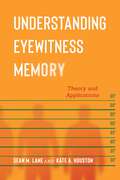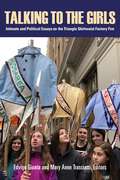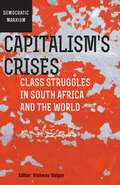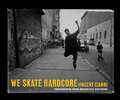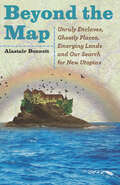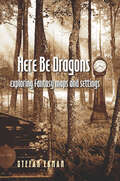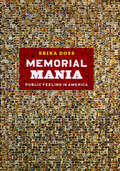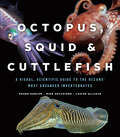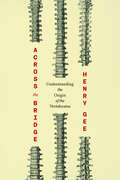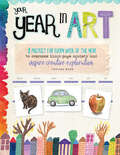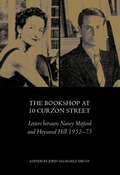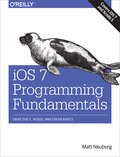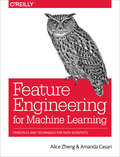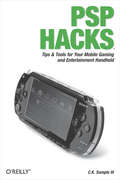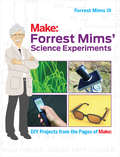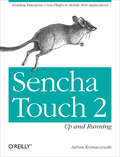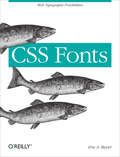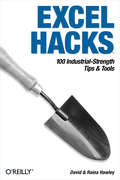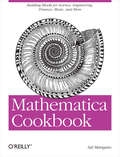- Table View
- List View
Understanding Eyewitness Memory: Theory and Applications (Psychology and Crime)
by Sean M. Lane Kate A. HoustonAn essential overview of how perception and memory affect eyewitness testimonyIn 1981, sixteen-year-old Michael Williams was convicted on charges of aggravated rape based on the victim’s eyewitness testimony. No other evidence was found linking him to the attack. After nearly twenty-four years, Williams was released after three separate DNA analyses proved his innocence. The victim still maintains that Williams was the culprit.This heartbreaking case is but one example of eyewitness error. In Understanding Eyewitness Memory, Sean M. Lane and Kate A. Houston delve into the science of eyewitness memory. They examine a number of important topics, from basic research on perception and memory to the implications of this research on the quality and accuracy of eyewitness evidence. The volume answers questions such as: How do we remember and describe people we’ve encountered? What is the nature of false and genuine memories? How do emotional arousal and stress affect what we remember?Understanding Eyewitness Memory offers a brilliant overview of how memory and psychology affect eyewitness testimony, where quality and accuracy can mean the difference between wrongful imprisonment and true justice.
Talking to the Girls: Intimate and Political Essays on the Triangle Shirtwaist Factory Fire
by Edvige Giunta and Mary Anne TrasciattiCandid and intimate accounts of the factory-worker tragedy that shaped American labor rights On March 25, 1911, a fire broke out on the eighth floor of the Asch Building in Greenwich Village, New York. The top three floors housed the Triangle Waist Company, a factory where approximately 500 workers, mostly young immigrant women and girls, labored to produce fashionable cotton blouses, known as “waists.” The fire killed 146 workers in a mere 15 minutes but pierced the perpetual conscience of citizens everywhere. The Asch Building had been considered a modern fireproof structure, but inadequate fire safety regulations left the workers inside unprotected. The tragedy of the fire, and the resulting movements for change, were pivotal in shaping workers' rights and unions. A powerful collection of diverse voices, Talking to the Girls: Intimate and Political Essays on the Triangle Fire brings together stories from writers, artists, activists, scholars, and family members of the Triangle workers. Nineteen contributors from across the globe speak of a singular event with remarkable impact. One hundred and eleven years after the tragic incident, Talking to the Girls articulates a story of contemporary global relevance and stands as an act of collective testimony: a written memorial to the Triangle victims.
Capitalism’s Crises: Class struggles in South Africa and the world (Democratic Marxism Sereis Ser.)
by VishwasSatgarThe contributors to this volume draw on a non-dogmatic Marxist approach to explain the systemic and conjunctural dynamics of crisis inherent in global capitalism. Their analysis asks what is historically specific to capitalism's crises while avoiding catastrophic or defeatist claims. At the same time the volume situates left agency within actual patterns of resistance and class struggle to clarify the potential for transformative change.The cycle of resistance strengthened by the World Socal Forum and transnational activism is now punctuated by the experience of the Arab Spring, the agency of anti-systemic movements, left think tanks, the Occupy Wall Street Movement, labour unions, left parties in Europe such as Syrizia and Podemos and peoples' budgeting in Kerala, India. On the down side, we are witnessing the waning of the Workers Party in Brazil and serious challenges for South Africa's once powerful labour movement and still formative social justice activism. All these developments are assessed in this volume.This is the second volume in the Democratic Marxism series. It elaborates on crucial themes introduced in the first volume, Marxism in the 21st Century: Crisis, Critique and Struggle (edited by Michelle Williams and Vishwas Satgar).
The Gender Trap: Parents and the Pitfalls of Raising Boys and Girls
by Emily W. KaneA detailed account of how gender is learned and unlearned in the homeFrom the selection of toys, clothes, and activities to styles of play and emotional expression, the family is ground zero for where children learn about gender. Despite recent awareness that girls are not too fragile to play sports and that boys can benefit from learning to cook, we still find ourselves surrounded by limited gender expectations and persistent gender inequalities. Through the lively and engaging stories of parents from a wide range of backgrounds, The Gender Trap provides a detailed account of how today’s parents understand, enforce, and resist the gendering of their children. Emily Kane shows how most parents make efforts to loosen gendered constraints for their children, while also engaging in a variety of behaviors that reproduce traditionally gendered childhoods, ultimately arguing that conventional gender expectations are deeply entrenched and that there is great tension in attempting to undo them while letting 'boys be boys' and 'girls be girls.'
We Skate Hardcore: Photographs from Brooklyn's Southside
by Vincent CianniThe stunning photographs of We Skate Hardcore reveal the determination, the dreams, and the rough and tumble story of urban Latino youth coming of age in New York City. Vincent Cianni spent eight years photographing and documenting a group of Latino in-line skaters in the Southside of Williamsburg, Brooklyn. Cianni weaves together images of the skaters with their own words, showing the skaters' struggles to find a place to skate and build skate parks, and just to survive in the city. In the evacuated industrial spaces of their neighborhood, the skaters carve out places for enjoying their sport and showing off their skills—often thwarting established rules and authority figures in the process. Their stories are both personal and resonant; they reflect the trials and tenacity of a young urban culture, as well as life in Southside's Latino community. We Skate Hardcore, with its verve and youthful energy, will especially appeal to photographers, those interested in urban studies and adolescence, New Yorkers, and in-line skaters and extreme sports enthusiasts everywhere.
Beyond the Map: Unruly Enclaves, Ghostly Places, Emerging Lands and Our Search for New Utopias
by Alastair BonnettNew islands are under construction or emerging because of climate change. Eccentric enclaves and fantastic utopian experiments are multiplying. Once-secret fantasy gardens are cracking open their doors to outsiders. Our world is becoming stranger by the day—and Alastair Bonnett observes and captures every fascinating change. In Beyond the Map, Bonnett presents stories of the world’s most extraordinary spaces—many unmarked on any official map—all of which challenge our assumptions about what we know—or think we know—about our world. As cultural, religious and political boundaries ebb and flow with each passing day, traditional maps unravel and fragment. With the same adventurous spirit he effused in the acclaimed Unruly Places, Bonnett takes us to thirty-nine incredible spots around the globe to explore these changing boundaries and stimulate our geographical imagination. Some are tied to disruptive contemporary political turbulence, such as the rise of ISIL, Russia’s incursions into Ukraine and the Brexit vote in the United Kingdom. Others explore the secret places not shown on Google Earth or reflect fast-changing landscapes. Beyond the Map journeys out into a world of mysterious, daunting and magical spaces. It is a world of hidden cultures and ghostly memories, of uncountable new islands and curious stabs at paradise. From the phantom tunnels of the Tokyo subway to a stunning movie-set re-creation of 1950s-era Moscow; from the caliphate of the Islamic State to virtual cybertopias—this book serves as an imaginative guide to the farthest fringes of geography.
The Connecticut Prison Association and the Search for Reformatory Justice (The Driftless Connecticut Series)
by Gordon S. BatesHow a groundbreaking advocacy organization has helped shape Connecticut's criminal justice system since 1875 The Connecticut Prison Association and the Search for Reformatory Justice looks at the role the Connecticut Prison Association played in the formation of the state's criminal justice system. Now organized under the name Community Partners in Action (CPA), the Connecticut Prison Association was formed to ameliorate the conditions of criminal defendants and people in prison, improve the discipline and administration of local jails and state prisons, and furnish assistance and encouragement to people returning to their communities after incarceration. The organization took a leading role in prison reform in the state and was instrumental in a number of criminal justice innovations. Gordon S. Bates, former Connecticut Prison Association volunteer and executive director (1980 – 1998), offers a detailed history of this and similar voluntary associations and their role in fostering a rehabilitative, rather than a retributive, approach to criminal justice. First convened in 1875 as the Friends of Partners of Prisoners Society, then evolving into the Connecticut Prison Association and CPA, the organization has consistently advocated for a humane, rehabilitative approach to prisoner treatment.
Here Be Dragons: Exploring Fantasy Maps and Settings
by Stefan Ekman Stefar EkmanFirst in-depth study of the use of landscape in fantasy literatureWinner of the Mythopoeic Scholarship Award for Myth and Fantasy Studies (2016) Fantasy worlds are never mere backdrops. They are an integral part of the work, and refuse to remain separate from other elements. These worlds combine landscape with narrative logic by incorporating alternative rules about cause and effect or physical transformation. They become actors in the drama—interacting with the characters, offering assistance or hindrance, and making ethical demands. In Here Be Dragons, Stefan Ekman provides a wide-ranging survey of the ubiquitous fantasy map as the point of departure for an in-depth discussion of what such maps can tell us about what is important in the fictional worlds and the stories that take place there. With particular focus on J. R. R. Tolkien's The Lord of the Rings, Ekman shows how fantasy settings deserve serious attention from both readers and critics. Includes insightful readings of works by Steven Brust, Garth Nix, Robert Holdstock, Terry Pratchett, Charles de Lint, China Miéville, Patricia McKillip, Tim Powers, Lisa Goldstein, Steven R. Donaldson, Robert Jordan, and Neil Gaiman and Charles Vess.
The All New Illustrated Guide to Everything Sold in Hardware Stores
by Steve Ettlinger Phil SchmidtAn updated edition of the ultimate hardware shopping guide and reference book: “Organized, accessible and cheerfully reassuring.” —Publishers WeeklyTired of making multiple trips to the hardware store because you purchased the wrong item? Or wandering the aisles feeling overwhelmed and bewildered? This is the illustrated reference that helps you learn the difference between drywall screws and deck screws; between faucet washers and neoprene O-rings; and between red wire nuts and blue wire nuts. And that’s before we even get to understanding nail gauges and drill bit sizes. The next time you talk to a hardware store clerk, rather than asking for “screws about two inches long,” you’ll be able to ask for #3 gauge 2-1/4-inch-long panhead screws with SAE 5/16’ flat washers!The All New Illustrated Guide to Everything Sold in Hardware Stores is filled with color photos that let you see in life-size scale what different screws and nails and washers and bolts are called, accompanied by brief descriptions of their recommended uses—so you’ll be able to ask for them with accuracy and use them with precision.“Recommended for beginners: new homeowners and handypersons just getting started.” —Library Journal
Memorial Mania: Public Feeling in America
by Erika DossIn the past few decades, thousands of new memorials to executed witches, victims of terrorism, and dead astronauts, along with those that pay tribute to civil rights, organ donors, and the end of Communism have dotted the American landscape. Equally ubiquitous, though until now less the subject of serious inquiry, are temporary memorials: spontaneous offerings of flowers and candles that materialize at sites of tragic and traumatic death. In Memorial Mania, Erika Doss argues that these memorials underscore our obsession with issues of memory and history, and the urgent desire to express—and claim—those issues in visibly public contexts.Doss shows how this desire to memorialize the past disposes itself to individual anniversaries and personal grievances, to stories of tragedy and trauma, and to the social and political agendas of diverse numbers of Americans. By offering a framework for understanding these sites, Doss engages the larger issues behind our culture of commemoration. Driven by heated struggles over identity and the politics of representation, Memorial Mania is a testament to the fevered pitch of public feelings in America today.
Octopus, Squid & Cuttlefish: A Visual, Scientific Guide to the Oceans' Most Advanced Invertebrates
by Roger Hanlon Louise Allcock Michael Vecchione“Cephalopods are often misunderstood creatures. Three biologists set the record straight on the behaviors and evolution of these invertebrates of the sea.” —Science NewsLargely shell-less relatives of clams and snails, the marine mollusks in the class Cephalopoda—Greek for “head-foot” —are colorful creatures of many-armed dexterity, often inky self-defense, and highly evolved cognition. They are capable of learning, of retaining information—and of rapid decision-making to avoid predators and find prey. They have eyes and senses rivaling those of vertebrates like birds and fishes, they morph texture and body shape, and they change color faster than a chameleon. In short, they captivate us.From the long-armed mimic octopus—able to imitate the appearance of swimming flounders and soles—to the aptly named flamboyant cuttlefish, whose undulating waves of color rival the graphic displays of any LCD screen, there are more than seven hundred species of cephalopod. Featuring a selection of species profiles, Octopus, Squid, and Cuttlefish reveals the evolution, anatomy, life history, behaviors, and relationships of these spellbinding animals. Their existence proves that intelligence can develop in very different ways: not only are cephalopods unusually large-brained invertebrates, they also carry two-thirds of their neurons in their arms. A treasure trove of scientific fact and visual explanation, this worldwide illustrated guide to cephalopods offers a comprehensive review of these fascinating and mysterious underwater invertebrates—from the lone hunting of the octopus, to the social squid, and the prismatic skin signaling of the cuttlefish.“After reading about the cephalopods’ abilities and behaviors, as well as their potential for advancing our lives, readers might think twice before ordering their next calamari appetizer.” —American Scientist
Across the Bridge: Understanding the Origin of the Vertebrates
by Henry Gee“Addresses an important topic for biologists and zoologists about vertebrates’ place in the ‘grand scheme’ . . . genuinely witty and charming . . . magnificent.” —Neil J. Gostling, University of SouthamptonOur understanding of vertebrate origins and the backbone of human history evolves with each new fossil find and DNA map. Many species have now had their genomes sequenced, and molecular techniques allow genetic inspection of even non-model organisms. But as longtime Nature editor Henry Gee argues in Across the Bridge, despite these giant strides and our deepening understanding of how vertebrates fit into the tree of life, the morphological chasm between vertebrates and invertebrates remains vast and enigmatic.As Gee shows, even as scientific advances have falsified a variety of theories linking these groups, the extant relatives of vertebrates are too few for effective genetic analysis. Moreover, the more we learn about the species that do remain—from sea-squirts to starfish—the clearer it becomes that they are too far evolved along their own courses to be of much use in reconstructing what the latest invertebrate ancestors of vertebrates looked like. Fossils present yet further problems of interpretation. Tracing both the fast-changing science that has helped illuminate the intricacies of vertebrate evolution as well as the limits of that science, Across the Bridge helps us to see how far the field has come in crossing the invertebrate-to-vertebrate divide—and how far we still have to go.“A beautiful ode to some of the least appreciated animals . . . guides the reader joyfully through deuterostomes—weaving disparate elements of embryology, paleontology, and morphology into an unprecedented and accessible narrative.” —Jakob Vinther, University of Bristol
Your Year in Art: A Project for Each Week of the Year
by Chelsea WardSharpen your art skills, quiet your inner critic, and boost your creativity with fifty-two weeks of inspirational drawing prompts, projects, and tips.For beginners as well as aspiring & practicing artists.Leave your artistic anxiety behind with 52 weeks of hearty inspiration. Your Year in Art is a must-have guide to rouse your creative side and burst your artist’s block once and for all! Designed for aspiring, beginning, and practicing artists looking to hone their talent, Your Year in Art is packed with unique projects and encouraging instruction.Sharpen your art skills and quiet your inner critic by learning how to draw habitually and spontaneously. As you build your craft, techniques, and confidence, you will learn to create in a way that celebrates your individuality.Each week, expert artist Chelsea Ward will get your creative juices flowing with a theme and a project designed to enhance your creativity. Projects include filling a sketchbook page with doodles and themed drawings, sketching on location, practicing ink-wash techniques, and working with color among many more inspiring ideas.Join fellow artists in an exciting yearlong journey of developing healthy creative habits, while discovering new ways to express yourself. Your Year in Art will show you how!
British Gardens in Time: The Greatest Garden Makers from Capability Brown to Christopher Lloyd
by Katie CampbellAs seen on BBC: An illustrated visit to four iconic gardens, each a product of its age, with stories of the creators and events that shaped them.The stories of these gardens’ creation include obsession, escape, social ambition, political intrigue, heartbreak, bankruptcy, and disaster. In unravelling these remarkable stories we reach back over the centuries to see these great gardens through fresh eyes.From the magnificent landscape garden at Stowe created by Bridgeman, Kent and Lancelot ‘Capability’ Brown; the Victorian masterpiece of Biddulph Grange; the romantic Arts & Crafts retreat at Nymans; and Christopher Lloyd’s plantsman’s paradise at Great Dixter, you will hear of adventure, innovation, and visionary individuals who changed the way we create our gardens and the plants we grow. Katie Campbell weaves the stories of these four exemplary gardens into a history of British gardening from the earliest cultivated spaces to the present day, exploring trends, influences, and pioneers. Fascinating historic detail and atmospheric storytelling make this a compelling read.Includes a foreword by Chris Beardshaw, specially commissioned photography by Nathan Harrison, and extensive archive illustrations “A worthy accompaniment to the BBC series of the same name.” —The Irish Times“Campbell treads a nice line between juicy facts and the aesthetic qualities of the gardens. I adore her description of Jane Austen-ish tourists turning up in carriages, buying guidebooks and filling up the local inns, while commendably tipping the head gardener.” —The Independent
The Bookshop at 10 Curzon Street: Letters Between Nancy Mitford and Heywood Hill 1952–73
by John Saumarez SmithCollected mid-twentieth–century correspondence between the author of The Pursuit of Love and her former employer, the celebrated London bookseller.Nancy Mitford was a brilliant personality, a remarkable novelist and a legendary letter writer. It is not widely known that she was also a bookseller. From 1942 to 1946 she worked in Heywood Hill’s famous shop in Curzon Street, and effectively ran it when the male staff were called up for war service. After the war she left to live in France, but she maintained an abiding interest in the shop, its stock, and the many and varied customers who themselves form a cavalcade of the literary stars of post-war Britain. Her letters to Heywood Hill advise on recent French titles that might appeal to him and his customers, gossip engagingly about life in Paris, and enquire anxiously about the reception of her own books, while seeking advice about new titles to read. In return Heywood kept her up to date with customers and their foibles, and with aspects of literary and bookish life in London. Charming, witty, utterly irresistible, the correspondence gives brilliant insights into a world that has almost disappeared.Praise for The Bookshop at 10 Curzon Street“This volume of letters between [Nancy Mitford], then living in Paris, and G. Heywood Hill (1907–1986) is like a glass of champagne, from a good year, at a quiet garden party. It’s a beautiful day, one is among friends—but not too many—and laughter reigns.” —The New Criterion
Introduction to Machine Learning with Python: A Guide for Data Scientists
by Sarah Guido Andreas C. MüllerMachine learning has become an integral part of many commercial applications and research projects, but this field is not exclusive to large companies with extensive research teams. If you use Python, even as a beginner, this book will teach you practical ways to build your own machine learning solutions. With all the data available today, machine learning applications are limited only by your imagination.You’ll learn the steps necessary to create a successful machine-learning application with Python and the scikit-learn library. Authors Andreas Müller and Sarah Guido focus on the practical aspects of using machine learning algorithms, rather than the math behind them. Familiarity with the NumPy and matplotlib libraries will help you get even more from this book.With this book, you’ll learn:Fundamental concepts and applications of machine learningAdvantages and shortcomings of widely used machine learning algorithmsHow to represent data processed by machine learning, including which data aspects to focus onAdvanced methods for model evaluation and parameter tuningThe concept of pipelines for chaining models and encapsulating your workflowMethods for working with text data, including text-specific processing techniquesSuggestions for improving your machine learning and data science skills
iOS 7 Programming Fundamentals: Objective-C, Xcode, and Cocoa Basics
by Matt NeuburgIf you’re getting started with iOS development, or want a firmer grasp of the basics, this practical guide provides a clear view of its fundamental building blocks—Objective-C, Xcode, and Cocoa Touch. You’ll learn object-oriented concepts, understand how to use Apple’s development tools, and discover how Cocoa provides the underlying functionality iOS apps need to have. Dozens of example projects are available at GitHub.Once you master the fundamentals, you’ll be ready to tackle the details of iOS app development with author Matt Neuburg’s companion guide Programming iOS 7.Explore the C language to learn how Objective-C worksLearn how instances are created, and why they’re so importantTour the lifecycle of an Xcode project, from inception to App StoreDiscover how to build interfaces with nibs and the nib editorExplore Cocoa’s use of Objective-C linguistic featuresUse Cocoa’s event-driven model and major design patternsLearn the role of accessors, key-value coding, and propertiesUnderstand the power of ARC-based object memory managementSend messages and data between Cocoa objects
Feature Engineering for Machine Learning: Principles and Techniques for Data Scientists
by Alice Zheng Amanda CasariFeature engineering is a crucial step in the machine-learning pipeline, yet this topic is rarely examined on its own. With this practical book, you’ll learn techniques for extracting and transforming features—the numeric representations of raw data—into formats for machine-learning models. Each chapter guides you through a single data problem, such as how to represent text or image data. Together, these examples illustrate the main principles of feature engineering.Rather than simply teach these principles, authors Alice Zheng and Amanda Casari focus on practical application with exercises throughout the book. The closing chapter brings everything together by tackling a real-world, structured dataset with several feature-engineering techniques. Python packages including numpy, Pandas, Scikit-learn, and Matplotlib are used in code examples.You’ll examine:Feature engineering for numeric data: filtering, binning, scaling, log transforms, and power transformsNatural text techniques: bag-of-words, n-grams, and phrase detectionFrequency-based filtering and feature scaling for eliminating uninformative featuresEncoding techniques of categorical variables, including feature hashing and bin-countingModel-based feature engineering with principal component analysisThe concept of model stacking, using k-means as a featurization techniqueImage feature extraction with manual and deep-learning techniques
PSP Hacks: Tips & Tools for Your Mobile Gaming and Entertainment Handheld
by C. K. Sample IIISure, it's just what you've been clamoring for: an ultra slick, portable version of the most popular console gaming system in the world. But Sony's new PlayStation Portable (PSP) isn't just a handheld gaming device. Beyond its killer graphics and spectacular widescreen LCD for unparalleled game play, it also sports wireless connectivity and a variety of multimedia features, including video, music, and digital photography. Your wildly versatile, endlessly powerful PSP practically begs you to hack and repurpose it to your liking.To save you the trouble and show you how to make the PSP do more than you ever imagined--and more than Sony ever intended--PSP Hacks is one succinct volume of 50 of the coolest, most useful, up-to-the-minute hacks for this amazing device. You'll learn how to open your PSP's hardware and what to safely plug into it. You'll explore and put to good use every hidden feature of the device. You'll be able to move all sorts of multimedia onto your PSP and find ways to extend its wireless capabilities. And you'll find out how to get the very best experience out of online game play.With PSP Hacks, you can accomplish a whole lot more than good gaming on the PSP. You'll quickly learn to surf the Web with a PSP, chat in IRC, and use the PSP to read web comics, ebooks, and RSS feeds. Other expert tips and tools allow you to sync an address book to your PSP, watch UMD movies, fool iTunes into thinking the PSP is an iPod Shuffle, and much more.The innovative hacks, tweaks, and how-tos in this essential guide make it easy to customize your PSP, take full advantage of features, capabilities, and functionality far beyond what's listed in the PSP user manual, and make your PSP perform countless tricks that only an all-in-one portable entertainment unit as remarkable and revolutionary as this one could.
Forrest Mims' Science Experiments: DIY Projects from the Pages of Make:
by Forrest M. Mims IIIForrest M. Mims is a revered contributor to Make: magazine, where his popular columns about science-related topics and projects for Makers are evergreen treasures. Collected together here for the first time, these columns range from such simple projects as building an LED tracker for hand-launched night rockets to such challenging builds as transforming strings of data into unique musical compositions.A variety of photography and imaging projects are featured, including an ultra-sensitive twilight photometer that measures the elevation of layers of dust, smoke, and smog from around 3,000 feet to the top of the stratosphere at 31 miles! Most of the projects can be done with a collection of simple electronic components, such as LEDs, transistors, resistors, and batteries. To inspire and motivate readers, the book also includes profiles of such famous Makers as President Thomas Jefferson and Microsoft co-founder Paul Allen.
eCommerce in the Cloud: Bringing Elasticity to eCommerce
by Kelly GoetschIs your eCommerce solution ready for the cloud? This practical guide shows experienced and aspiring web architects alike how to adopt cloud computing incrementally, using public Infrastructure-as-a-Service and Platform-as-a-Service. You will learn how to marshal as much capacity as you need to handle peak holiday or special-event traffic.Written by eCommerce expert Kelly Goetsch, this book helps architects leverage recent technological advances that have made it possible to run an entire enterprise-level eCommerce platform from a cloud.Explore cloud service models: Infrastructure-as-a-Service, Platform-as-a-Service, and Software-as-a-ServiceLearn about public, hybrid, and private cloud deployment modelsUnderstand the impact of omnichannel retailing on platform and deployment architecturesBuild an auto-scaling solution that can quickly add or subtract hardware in response to real-time trafficRe-apply what you already know about security to the cloudRun a single eCommerce platform from multiple data centers, including several forms of multi-masterBuild a hybrid solution or deploy your entire platform to the cloudLearn application and deployment architecture for "cloud native" through legacy eCommerce platformsUse Software-as-a-Service for eCommerce, including Content Delivery Networks and Global Site Load Balancing services
Sencha Touch 2 Up and Running: Building Enterprise Cross-Platform Mobile Web Applications
by Adrian KosmaczewskiLaunch into Sencha Touch 2 with this hands-on book, and quickly learn how to develop robust mobile web apps that look and behave like native applications. Using numerous code samples, author Adrian Kosmaczewski guides you every step of the way through this touchscreen-enabled JavaScript framework—from creating your first basic app to debugging, testing, and deploying a finished product. Learn how to craft user interfaces, build forms, and manage data, then deploy as either an HTML5 offline app or as a native app for Android, iOS, or Blackberry.Define classes and create instances with Sencha Touch’s object-oriented abstractionBuild user interfaces with the framework’s extensive set of high-level componentsDevelop apps that consume complex data, whether it’s stored locally or on remote serversOrganize your application code in a consistent, predictable, and maintainable wayUse Sass stylesheets to craft a personalized look and feel for your appDebug, test, and document your app with WebKit Web Inspector, Jasmine, Siesta, and JSDuckUse the Sencha Architect UI designer and IDE to simplify complex project development
CSS Fonts: Web Typography Possibilities
by Eric A. MeyerFrom custom fonts to ad-hoc font families you assemble out of a variety of individual faces, CSS 3 gives you more typographic options than ever before. This concise guide shows you how to use CSS properties to gain a fine-grained and wide-ranging influence over how you display fonts on the Web.Short and sweet, this book is an excerpt from the upcoming fourth edition of CSS: The Definitive Guide. When you purchase either the print or the ebook edition of Fonts, you’ll receive a discount on the entire Definitive Guide once it’s released. Why wait? Learn how to choose and manipulate fonts right away.Specify font families and their generic alternativesUse @font-face to specify customized downloadable fontsSize your fonts with absolute or relative scales, percentages, or length unitsUnderstand the difference between italic and oblique stylesLearn how to specify or suppress a font’s kerning data and other font featuresSynthesize your own variants for fonts that lack bold or italic text
Excel Hacks: 100 Industrial Strength Tips and Tools
by David Hawley Raina HawleyIf you think that getting creative with Excel means the underhanded tweaking of numbers, think again. Excel Hacks shows even the most experienced users how to do things with Excel they might never have thought of doing--and lets them have a little fun while they're at it.Microsoft Excel is not just the dominant spreadsheet in the world; it's also one of the most popular applications ever created. Its success lies not only in its power and flexibility, but also in its streamlined, familiar interface that casually conceals its considerable capabilities. You don't need to know everything that Excel can do in order to use it effectively, but if you're like the millions of Excel power users looking to improve productivity, then Excel Hacks will show you a wide variety of Excel tasks you can put to use, most of which are off the beaten path.With this book, Excel power users can bring a hacker's creative approach to both common and uncommon Excel topics--"hackers" in this sense being those who like to tinker with technology to improve it. The "100 Industrial Strength Tips and Tools" in Excel Hacks include little known "backdoor" adjustments for everything from reducing workbook and worksheet frustration to hacking built-in features such as pivot tables, charts, formulas and functions, and even the macro language.This resourceful roll-up-your-sleeves guide is for intermediate to advanced Excel users eager to explore new ways to make Excel do things--from data analysis to worksheet management to import/export--that you never thought possible. Excel Hacks will help you increase productivity with Excel and give you hours of "hacking" enjoyment along the way.
Mathematica Cookbook: Building Blocks for Science, Engineering, Finance, Music, and More
by Sal ManganoMathematica Cookbook helps you master the application's core principles by walking you through real-world problems. Ideal for browsing, this book includes recipes for working with numerics, data structures, algebraic equations, calculus, and statistics. You'll also venture into exotic territory with recipes for data visualization using 2D and 3D graphic tools, image processing, and music.Although Mathematica 7 is a highly advanced computational platform, the recipes in this book make it accessible to everyone -- whether you're working on high school algebra, simple graphs, PhD-level computation, financial analysis, or advanced engineering models.Learn how to use Mathematica at a higher level with functional programming and pattern matchingDelve into the rich library of functions for string and structured text manipulationLearn how to apply the tools to physics and engineering problemsDraw on Mathematica's access to physics, chemistry, and biology dataGet techniques for solving equations in computational financeLearn how to use Mathematica for sophisticated image processingProcess music and audio as musical notes, analog waveforms, or digital sound samples
